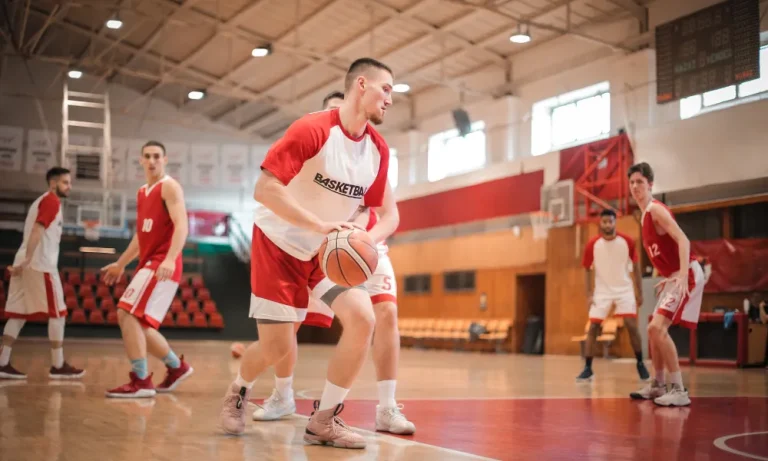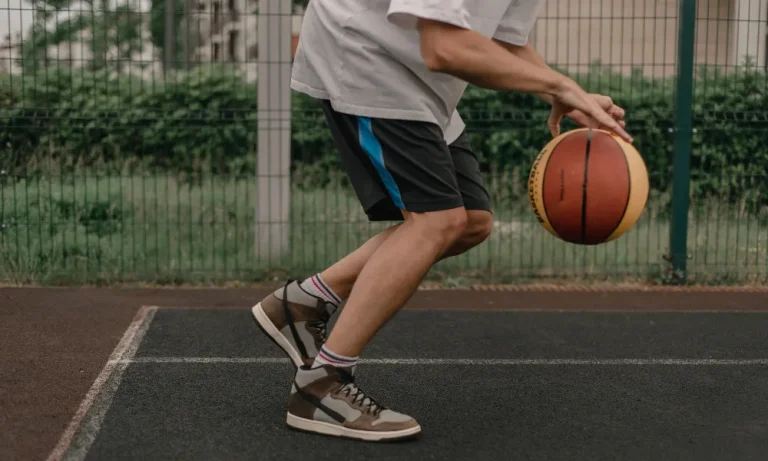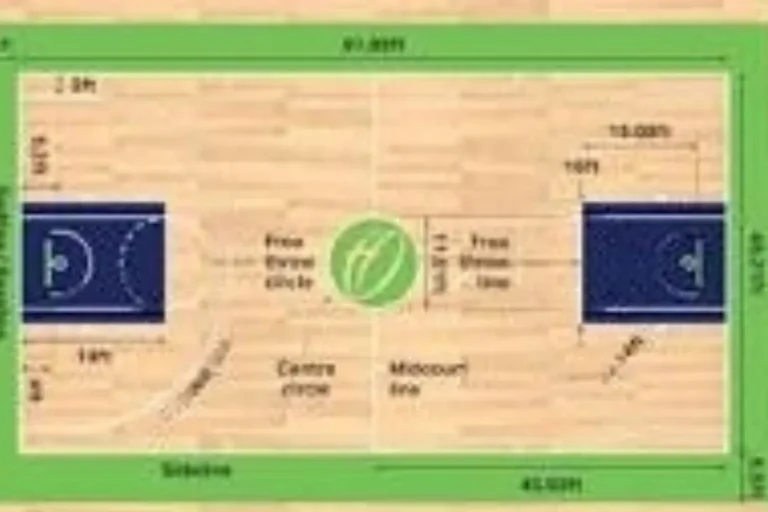Why Do Basketball Players Wear Masks? (Unveil the Truth)
Have you ever wondered why basketball players sometimes wear masks during games? It’s not just a fashion statement or a mere accessory. In this article, we’ll dive deep into the reasons behind basketball players donning masks, exploring the benefits they provide and the impact they have on the game. Let’s unravel this intriguing mystery together!
What are Basketball Masks?
Basketball masks, also known as face masks or protective masks, are specialized equipment worn by basketball players to safeguard their faces during games. These masks serve a crucial purpose in protecting players from potential injuries, particularly to the nose, cheekbones, and jaw. Let’s take a closer look at the different types of basketball masks and how they provide essential protection.
There are primarily two types of basketball masks: clear plastic masks and metal masks. Clear plastic masks are the most common and are made from a durable, lightweight material that allows players to maintain visibility on the court. Metal masks, on the other hand, are typically used for more severe injuries and provide additional protection due to their robust construction.
The design of basketball masks prioritizes both protection and comfort. The masks are contoured to fit the player’s face snugly, ensuring minimal movement during the game. They are secured with adjustable straps, allowing for a customized fit. Additionally, the masks are carefully crafted to provide ample ventilation, preventing discomfort and fogging during intense physical activity.
Basketball masks are specifically engineered to absorb impact and distribute the force of collisions away from the vulnerable areas of the face. The materials used in their construction, such as polycarbonate or metal alloys, offer high levels of strength and resilience. This design enables players to confidently engage in aggressive plays without compromising their safety.
Injury Prevention and Rehabilitation
As a basketball player, injuries are a part of the game. Some injuries, such as facial fractures or broken noses, may require players to wear masks for both prevention and rehabilitation purposes. Let’s delve into the reasons why masks are vital in these situations.
Basketball masks play a crucial role in preventing further injuries. When a player suffers a facial injury, wearing a mask helps protect the injured area from direct contact, reducing the risk of aggravating the injury or causing additional damage. By acting as a physical barrier, masks shield vulnerable facial bones, such as the nose or cheekbones, from accidental bumps or collisions during games or practices.
Moreover, masks aid in the healing process by providing stability and support to the injured area. They help immobilize the affected facial bones, allowing them to heal properly without unnecessary movement or stress. This helps reduce pain, swelling, and the risk of complications.
Specific injuries that often require basketball players to wear masks include nasal fractures, orbital fractures, and jaw fractures. For example, a player who has suffered a broken nose may wear a mask to protect the nose from further trauma while it heals. Similarly, a player recovering from an orbital fracture may wear a mask to shield the delicate eye socket area during the rehabilitation phase.
Respiratory Benefits
Did you know that wearing masks in basketball can actually provide respiratory benefits? It may seem surprising, but let’s explore how masks can improve respiratory function and enhance performance during intense physical activity.
One advantage of wearing masks during basketball is that they can help regulate airflow. Masks act as a filter, preventing large particles like dust or pollen from entering the respiratory system. This can be especially beneficial for players who have allergies or asthma, as it reduces the risk of triggering respiratory symptoms during games or practices.
Furthermore, masks create a slight resistance to breathing, similar to training at higher altitudes. This resistance encourages players to take deeper breaths and engage their respiratory muscles more effectively. Over time, this can lead to enhanced lung capacity and improved endurance on the court.
By improving respiratory function, masks allow basketball players to maintain a steady flow of oxygen to their muscles, reducing fatigue and enhancing overall performance. With increased endurance, players can sustain a higher level of intensity throughout the game, leading to improved agility, speed, and reaction time.
Psychological and Confidence Boost
Wearing masks in basketball not only has physical benefits but also has a significant psychological impact on players. Let’s explore how masks can provide a sense of security and confidence, both for the wearer and their teammates.
For basketball players who have suffered facial injuries, wearing masks can provide a sense of security. By covering the injured area, masks help players feel protected and reduce the fear of re-injury. This psychological reassurance allows players to focus on their game without worrying about their vulnerable facial bones. It boosts their confidence and enables them to play with a greater sense of freedom and aggression.
Masks also influence opponents and teammates. When opponents see a player wearing a mask, it can create a psychological advantage. The mask can give the impression that the player is tough and resilient, making opponents think twice before attempting aggressive moves. This can give the wearer a psychological edge by intimidating opponents and influencing their actions on the court.
Moreover, masks can also inspire and motivate teammates. When teammates see a player wearing a mask, they witness a display of determination and perseverance. This can boost team morale and create a sense of unity, as teammates rally behind their injured comrade, knowing that they are willing to push through adversity. The mask becomes a symbol of resilience and a reminder of the player’s commitment to the team.
Fashion and Style
An emerging trend in basketball is the use of masks as a fashion statement. Not only do masks provide protection and respiratory benefits, but they are also becoming a way for players to showcase their personal style on the court. Let’s explore how masks are being customized and branded by players, as well as highlight some popular players who have made masks a part of their fashion repertoire.
Customization is key when it comes to masks in basketball. Players are personalizing their masks to reflect their individuality and team spirit. Some players opt for vibrant colors or patterns that match their team’s uniform, while others add their initials or jersey number to the mask. This customization not only adds a touch of style but also helps players identify their mask easily during games.
Additionally, masks have become a branding opportunity for players. Some athletes collaborate with designers or brands to create unique masks that promote their personal brand. These branded masks often feature logos or slogans associated with the player, further enhancing their personal style and marketability.
Several popular players have embraced masks as a part of their fashion repertoire. For example, LeBron James, known for his sense of style both on and off the court, has been seen wearing custom-designed masks that complement his outfits. Other players like Russell Westbrook and James Harden have also embraced the trend, incorporating masks into their signature looks.
Controversies and Challenges
While the use of masks in basketball has gained popularity, there are also controversies and challenges associated with their implementation. Let’s address some of these concerns and explore the potential challenges faced by players who wear masks, as well as the ongoing debate regarding their impact on competitive advantage.
One controversy surrounding the use of masks in basketball is related to communication. Masks can potentially hinder clear communication between players on the court, as they may muffle voices and make it harder to understand each other’s instructions and calls. This can be challenging, especially in fast-paced and high-pressure situations where effective communication is crucial for teamwork and coordination.
Another challenge faced by players wearing masks is related to visibility. Masks can restrict peripheral vision and limit the field of view, potentially affecting a player’s ability to see the entire court and anticipate movements. This can impact decision-making, spatial awareness, and reaction time, posing challenges during gameplay.
The debate around whether masks provide a competitive advantage or disadvantage is ongoing. While some argue that masks can give players a psychological advantage by intimidating opponents or providing a sense of security, others believe that they may hinder performance due to communication and visibility limitations. The impact of masks on performance can vary depending on the individual player and their adaptability to wearing masks.
Conclusion
The trend of wearing masks in basketball has taken the game to a new level of fashion and style. Players are customizing and branding their masks, making them a unique accessory that reflects their individuality and team spirit. However, controversies and challenges arise, including communication and visibility limitations. The debate continues regarding whether masks provide a competitive advantage or disadvantage. In the end, the use of masks in basketball strikes a balance between safety and performance on the court.
Technical FAQs – Why Do Basketball Players Wear Masks
Are masks worn in basketball only for fashion purposes?
No, masks are primarily worn in basketball for protection against facial injuries and to reduce the risk of contracting respiratory illnesses.
Can players customize their masks to match their team’s uniform?
Yes, players often customize their masks with colors, patterns, and designs that align with their team’s uniform to showcase team spirit.
Do masks hinder communication between players on the court?
Masks can potentially muffle voices, making communication challenging, especially in fast-paced situations. Clear communication is important for effective teamwork.
Do masks restrict a player’s peripheral vision?
Yes, masks can limit a player’s field of view, potentially affecting their ability to see the entire court and anticipate movements.
Do masks provide a competitive advantage or disadvantage?
The impact of masks on performance is debatable. Some argue they provide a psychological advantage, while others believe they may hinder communication and visibility.
Can masks be a branding opportunity for players?
Yes, players collaborate with designers or brands to create customized masks featuring logos or slogans associated with their personal brand.



